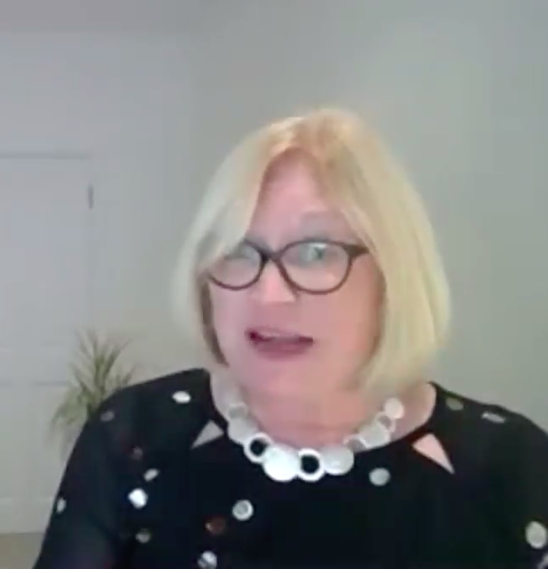
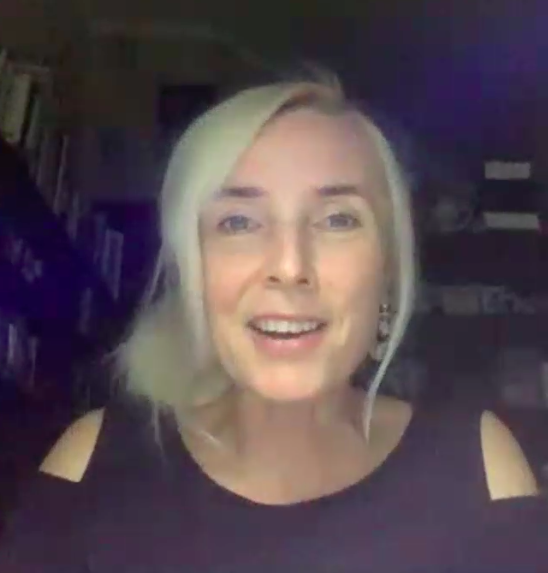
Lawrencian sisters… co-editors Susan Reid and Catherine Brown
INTRODUCTION
On November 28th, 2020, 8.00 pm UK time The Edinburgh Companion to D. H. Lawrence and the Arts, co-edited by Catherine Brown and Susan Reid was virtually launched.
The recording of the event is here (if this link does not work with Safari, use any other browser).
Celebration and communion are different things online, of course, but a particular kind of togetherness – as many have discovered during this year of Covid – was made possible through the awareness of distance. Also, far more of us could attend than would have been the case had it been an in-person event. Contributors, their family and friends, and simply the interested, attended from locations including Minsk (Belarus), Tulsa (Oklahoma), New Mexico, Yekaterinburg (Russia), Durham (North Carolina), Uppsala (Sweden), New Orleans, Galway (Ireland), Athens (Greece), St Louis (Missouri), Canberra (Australia), Vannes (Brittany), Montelupo Fiorentina (Tuscany), Naples, and Edinburgh.
The running order was:
- Welcome from editors Susan Reid and Catherine Brown
- Jackie Jones (the book’s commissioning literary editor at Edinburgh University Press, animal rights activist, and the woman who converted me to veganism)
- Laura Marcus (Goldsmiths Professor of English at Oxford, and formerly my colleague at New College Oxford during my period of teaching there)
- Sue Reid (my co-editor, reflecting on Lawrence and partying)
- Catherine Brown (me, reflecting on the process of editing)
- Howard Jacobson (on Lawrence and art)
- Questions and answers
- John Worthen (scholar and contributor of the chapter on ‘Lawrence as Performer’, reciting ‘The English are so nice’)
- Keith Cushman (scholar and contributor of the chapter on ‘Lawrence and the Idea of the Novel’, reading an extract from Sea and Sardinia)
JACKIE JONES [from 4 minutes 20 on the recording]
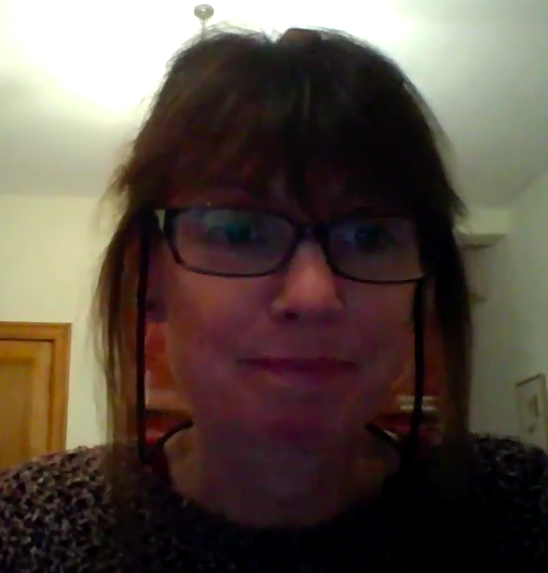
explained the concept of the volume, and of the series (entitled X and the Arts) of which it forms part. She said that she anticipated that this would be the first of many volumes about Lawrence coming out of Edinburgh University Press, as part of its excellent modernist listings.
LAURA MARCUS [from 9 minutes 44 on the recording]
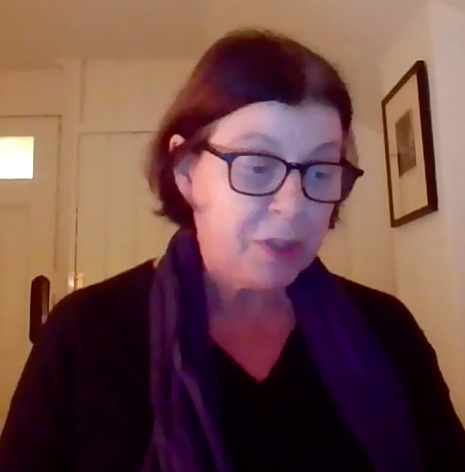
opened by saying: ‘Here there are many many old friends in small [Zoom frame] boxes. I wish we were all together – but given the circumstances it’s great we can have this launch.’ She praised the book as covering the ‘widest possible range of topics’ whilst, through its frequent cross-referencing, giving ‘the reader the feeling of a conversation between authors’. Moreover ‘The focus in the volume on the individual arts … is intertwined with an exploration of the very categories of art and aesthetic, as these were both embraced and rejected by Lawrence.’ Rather than presenting Lawrence as simply an anti-aesthete (the anti-aesthetic trend, as Isobel Armstrong has identified, ‘leaves one without resources of analysis’), he is presented in relation to a broadened concept of ‘art’, encompassing fashion, jewellery, dance, performance, historiography and the technological imagination. Another common theme (expressed in different terms in many chapters) was understanding of Lawrence as a writer of ‘trembling balance’ and provisionality of vision. One common theme of Lawrence criticism – the fall-out of the 1970s second-wave feminist critique of Lawrence – was hardly adduced, but instead Catherine Brown discusses the fall-off of Lawrence’s popularity and prestige in the 80s and 90s in relation to the cynicism and determinism of that period, with its relative lack of interest in Lawrencian themes such as the quickness of the living body – as particularly exemplified in Lawrence’s painting ‘Dance Sketch’, with its ‘man, woman, and most excellent goat.’
SUSAN REID [from 16 minutes 55 on the recording]
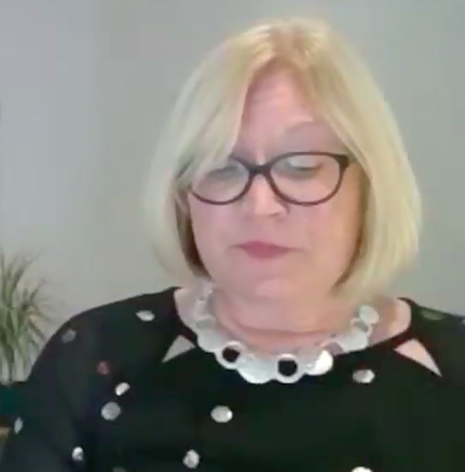
reminded us that Lawrence loved parties. There are over 300 references to them in his works, and many more in his letters. Most often, he wrote about wedding and Christmas parties – sometimes combined, as, wonderfully and memorably, at the Marsh Farm in The Rainbow. Like actual parties, he choreographs them carefully, bringing the right people into play, like an impresario; he therefore disliked surprise parties; he was irritated to be caught out by one organised for him in Sicily, at which he arrived in sandals. Moreover, in them he made many different arts work together (‘like a modernist version of Wagner’). She noted that it was significant that Mr Noon was not a writer or painted but a musician and composer who aspired to orchestrate a symphony – and that the wide lens provided by the eponymous ‘the arts’ allows a far wider Lawrencian canon than Leavis’s Great Tradition to be considered (the number of Lawrence’s works in the index of the volume is greater than in any other book about Lawrence of which Sue is aware). Some have said that he dabbled too broadly across the arts, and created too much. But to do so was simply modernist. Joyce, Proust and Richardson wrote at much greater length; Ford, Mansfield and Pound were also musicians; Lawrence was as much a modernist as any of them, and modernist in his own way. Our volume celebrates him as an experimental and provocative writer. Just as a party’s invitees can be chosen to generate creative friction, so were our authors drawn from a range of backgrounds, and for willingness to challenge myths about Lawrence – over three years ago, ‘in a much sunnier time…’
CATHERINE BROWN [from 23 minutes 44 on the recording]

‘I’m going to be talking about how this book came into being. So let me take you back to the summer of 2017, when many of us here today were physically together in London for the 14th triennial International DH Lawrence Conference. Just before the conference I was approached by Jackie Jones, who had apparently been redirected to me by Lawrence’s biographer David Ellis (thank you David!) to edit The Edinburgh Companion to DH Lawrence and the Arts. I have to say, I was over-busy and exhausted at the time, as I directing that conference. But I was also excited and interested in the idea. And, just as the conference had been an intensely collaborative event, one of my first thoughts was – if I’m to do this, I would like a co-editor.
So I approached Sue Reid, who is editor of Journal of DH Lawrence Studies – who better than someone who edits all the time? – and to my delight she said yes. That the volume we are celebrating today is not, as far as we’re aware, riddled with errors, that we have not put EUP in breach of copyright law with our use of images, and that our contributors are as diverse and distinguished as they are, are largely due to her expertise, her experience, and her Lawrencian address book. I’m so grateful to her for being such a delight to work with, and for teaching me so much.
Of course, our first task was to be fishers of men and women, and to bring together the group of 27 fine contributors that we have. With your help – and I’m gesturing here towards the other 25 – we put together a proposal. And where you weren’t able to get back to us in time, as occasionally happened, we made up the kind of thing that we would say if we were writing your chapter, knowing that we wouldn’t bind you to this.
Or would we? Isn’t a version of binding someone else to one’s own, inevitably less expert, take on a subject, part of what being an editor is? And what’s more, to expressing it in something approaching the kind of style, vocabulary, syntax, that we would have used if we were expressing it?
To some extent yes; and I’ve learned a lot from Sue over the last three years on where to strike the balance between ensuring parity of approach and style across the volume, and being obnoxiously dictatorial on the other. I’m not saying I always got this right – any of my students out there, there are distinguished critics in the room who know how you feel… We’ve certainly asked a lot of our contributors in terms of shaping their chapters to make a coherent volume, we’re very conscious of this, and you have been very patient in working with us. We have not forgotten Lawrence’s own responses to being edited.
When he complaining about the editing of his novels by Ford Madox Ford and others in 1913 he referred to: ‘those damned old stagers’ who ‘want to train up a child in the way it should grow, whereas if it’s destined to have a snub nose, it’s a sheer waste of time to harass the poor brat into Roman-nosedness’
There was one contributor whose response to our comments on his second draft were particularly memorable. And I hasten to make clear that I have his permission to quote him; it was just a gloriously honest and even Lawrencian response, that got to the heart of why we do what we do.
“I [am not] aware of any recent criticism that I wish to cite or refer to; this (of course) because I don’t read Lawrence criticism any more.
In this way, of course, I am perfectly aware that I am going against good academic practice, and incur the criticism that what is needed is something clearer and better referenced. But I’m not, I am afraid, capable at this stage of my life of producing such a thing. WYSIWYG, I fear ‒ and if you don’t in the end like what you get, then the answer is very simple: leave the essay out of the volume.
I’m quite serious about this. You both did your best for it, you really did: you gave me all the advice that was necessary, in the way this book needs. But I am no longer academic: I go my own way. That was the risk you incurred when you suggested that I do a piece… You really don’t need my piece, anyway, with essays coming in like that on the plays. By your standards, I fear, my piece is always going to remain vague and undefined (undefining, too).
But it’s actually no skin off my nose if it never gets published. I’ve had some fun with the writing of it and if that’s the end of it, who minds: I won’t, for sure. (The way my memory works now, I will have no recollection of it or of any possible disagreement over it in twelve months’ time, anyway. You think I am exaggerating? I’m not.)
Enough said. I shall remain good friends with you both, whatever.
And thank you for all your work in what was perhaps a fruitless exercise. This old dog . . . ‒”
Needless to say, his chapter is a glorious contribution to our volume. And I’m delighted to say that he will be speaking to us later.
With regard to the later-stage minutae of editing, one thing I’ve learned is that whatever style guide a publisher gives you, it’s inadequate to all the cases that arise. How were we going to spell Lawrentian, out of the four available ways, if we were even going to permit this adjective at all? (we did and it ends ‘cean’). If the Cambridge University Press edition of Lawrence’s letters uses an m-dash without spaces either side, as Lawrence so often did in his handwriting, were we going to reproduce that even though if conflicts with EUP’s style guide (the answer was absolutely). And so on.
Sue and I are different people, and didn’t always feel identically, notably about the use of commas – which it turns out is one of the major stylistic variables between writers. Nor, more importantly, did we take the same intellectual approach to all chapters, inevitably, given our different areas of interest – and this was where the benefits of co-editing became most obvious. She picked up on things that I didn’t and vice versa. Though this does actually induce the thought experiment the question of what would happen if there were an infinite number of editors? Would the chapters become infinitely big, in response to our demands for expansion, or infinitely small, in response to our criticisms? Or perhaps we would all cancel each other out and leave it exactly as it was – infinite editing as no editing at all…
But editing does not just concern intellectual content. I had a particular amount to learn from Sue when it came to copyright. Now whatever its intrinsic rights and wrongs – and I’m conscious we have many published authors in the room who have an interest in this question – it does impose considerable administrative and financial burdens on anyone who wants to reproduce anything protected by it. Thanks, therefore, to all our contributors for telling us how many words you quoted from each of the volumes of the CUP Lawrence. But the real challenges came with the images. I hope you agree that it was worth it, we have in our book 38 colour plates, 22 black and white ‘figures’ and 2 ‘musical examples’.
Several took quite a lot of two and fro, but there was one artist that necessited a veritable email odyssey. Dorothy Brett. Dear Brett, a wonderful person and at her best a great artist, I based my whole chapter on one of her paintings – the double portrait of Lawrence as Pan and Christ – and we wanted another, Lawrence with a halo, for our front cover, since it’s a relatively unknown one, and has something to say.
We located the paintings, at the Harry Ransome Institute, University of Texas at Austin, which, for a fee, could supply high res copies. But they were very clear that they were not the rights holders. Who then was? Few other people had reproduced Brett in Lawrence books before, and when they had done so it was without attribution as to rights. Texas thought that the University of New Mexico might know. New Mexico didn’t, but thought that a couple of gallerists in Taos might know. The gallerists didn’t, and there the trail ran into the sand.
EUP would definitely not allow the images without explicit permission, especially as we wanted to use one of them on the cover. I was ready to give up, when amazingly the thread started again when we were negotiating about different images with the National Gallery.
Someone there passed us on to someone else who passed us on to someone called Christopher Esher. He is Dorothy Brett’s great-nephew, and sofar as he and we know, the sole rights-holder for her paintings. Thank you to him for saving my chapter and our cover.
The cover, for what it’s worth, occasioned protracted discussion between Sue and me.
I, whose soul inclines that rather serious way, wanted the whole thing blown up big, so the portrait filled the whole cover, and the words would appear above it. Sue, not wishing to be oppressed by Lawrence’s rather fervid look in this portrait, and with her greater respect for artistic integrity – given that given the dimensions of the painting are not the same as those of the book itself – wanted the whole painting, plus a border –my solution would have involved cutting off some of the stars. Having reached deadlock, we appealed to our respective husbands. And I think that they both sided with Sue, which is why the cover looks as it does.
But I asserted myself over the colour, and so we went with my choice of night-blue, which I hope no one is oppressed by; it allows the moon – so important to Lawrence – to shine all the more clearly.
So here it is. It’s been a big project and it’s taken a lot of time. And over that time lots has gone on, in the 27 lives most directly involved in this project, as well as in the world as a whole. It’s to the credit of EUP that they haven’t been slowed down by the pandemic.
And it’s to the credit of all our contributors who have suffered personal setbacks during their work, that they have nonetheless gone on to complete their chapters, just as Lawrence, however ill, in whatever turmoil, wrote nonetheless.’
Catherine Brown introducing Howard Jacobson:
‘Howard Jacobson is amongst other things a cultural critic. I’m going to mention that first.
He is a long-standing columnist at The Independent, where he functions as a cultural and political critic on a wide range of topics. He has presented on television on literature, art and religion and society. He is one of those literary figures to whom I think it would do us all a lot of good if we listened.
He’s also a literary critic. He studied English under FR Leavis at Cambridge, spent the first part of his career in English academia in Australia and England, and has published literary criticism – notably Shakespeare’s Magnanimity (1978), co-written with Wilbur Sanders.
Here is the balance that can be found within a couple of sentences in ‘Hamlet’s Sanity’ in Shakespeare’s Magnanimity: ‘Hamlet’s public display of private grief is no better than the drank no-grief-at-all of his mother. But it is no worse. A mature wisdom directs this scene: not a sad recognition of human frailties […] we are not to doubt that Hamlet’s sorrow is genuine because it is conceited.’
But he is also a distinguished novelist. Booker-Prize-winning (for his 2010 The Finkler Question), he has described himself as ’the Jewish Jane Austen’ (in response to being called ’the English Phillip Roth’).
His latest novel is the 2019 Life a Little, about a nonagenarian love story in North London.
Before that was the 2017 Pussy, a satirical fable against Donald Trump, and the 2016 Shylock is my Name, a novelistic reworking of The Merchant of Venice set in the present.
Before then, of those I know and particularly love, are Kalooki Nights (2006) (of which The Independent said ‘For its near reckless bravery it deserves some kind of literary VC’), and The Finkler Question (2010). His first novel, 1983, Coming from Behind, was a campus novel based on his own experiences of teaching at Wolverhampton Polytechnic. Howard is visiting professor of English at my College, and at a recent talk to our students he explained how through this novel he broke free of the tyranny of Leavis, whose influence had kept him as a critic, and delayed his beginning as a creative writer. Welcome, Howard.’
HOWARD JACOBSON [from 39 minutes on the recording]

[not quite word-for-word, but near-enough, I hope..]
‘This is a wonderfully glamorous and compendious volume about Lawrence. But Catherine’s mention of the Booker Prize makes me wonder whether he would have even made it onto a longlist. Imagine, had he won it, at the awards ceremony Camilla Parker-Bowles would have said ‘I thoroughly enjoyed your novel Mr Lawrence’ and – I wonder what he would have said…
Catherine and Sue’s introduction opens with a statement Lawrence made to Eastwood Debating Society in 1908 when he was 23. It is chastening enough that a small mining town had a debating society; but imagine any 23 year-old nowadays talking about art giving access to ‘primordial silences’ in which truth resides – in Eastwood or anywhere else…
Seeing John Worthen and David Ellis here today reminds me that I’m with people I was at Downing College Cambridge with. We all had the enormous honour of having been taught by Leavis. I don’t only say that because I’m worried because what John Worthen and David Ellis might say – though I am worried about what John Worthen and David Ellis might say. (That is the nature of being a Leavisite – that you’re terrified of your fellow Leavisites).
A better-known statement by Lawrence about art, from Studies in Classic American Literature, opens the first chapter, by Michael Bell: ‘never trust the artist, tell the tale.’ As a reader and a teacher of literature, I’ve lived by those words – and as a writer and teacher of literature, I live by them still. In fact, we humans must have known it to have been true before he told us so in those words. Poet’s aren’t the sole cause, if any at all, of the words that they speak.
And Lawrence’s two statements about art could in fact have been written on the same day. Art can’t be rationally comprehended, and one can’t simply decide to create it. Lawrence’s suspicion of artists is one of the things that makes him not a Romantic. But untrustworthiness goes beyond artists. We always tell lies to ourselves and each other – all the time. So never mind never ‘trust the artist’, ‘never trust anyone’. Artists’ falsity lies not in their being artists, but in sharing the common human subterfuge.
To say that Lawrence was not impressed by us humans is not to say anything new. Nor was it just the War that made him horrified by the mass of humanity. Even in Sons and Lovers, one finds him using words such as ‘conglomeration’ and ‘mass’, in negative application to humans. At the centre of it is Paul’s struggle to his escape intermingling first with his mother, then Miriam. ‘Authenticity’ was a catch-word when I was growing up in the sixties. Yet now I am troubled more by an indistinctness of being that prohibits our grasping what is outside ourselves, and our individual perspectives. In Sons and Lovers there is a scene where Paul and Clara are going through Nottingham Castle grounds, irritate. They impose their cheerlessness on the scene – and this makes them, as it were, bad painters. Because looking is a mode of making. Then a clock strikes and breaks their perspective; cheerfulness returns – the landscape gets back its individuality, its separateness from them. We need to be forgetful ourselves. Never trust the seer, trust the seen. In his sourer moods, Lawrence imagines a landscape without us in it – Birkin’s vision of a world without humans, just a hare sitting up.
Whatever else we make of that hare – and in my years as a teacher it has caused more dissension than anything else I can think of – it is not a liar. And so Lawrence’s maybe-too Whitmanesque exhortations to us to purify ourselves, at end of Studies in Classic American Literature. What stands between us and art? We do. There is, of course, something contradictory in Lawrence’s hectoring us not to hector. But myself, I don’t mind that in the least. It’s part of the inchoate, always-provisional nature of Lawrence’s thinking. No-one has ever better articulated what art is – what it’s for – and how little we amount to without it.’
QUESTIONS TO HOWARD
How might Lawrence fare as a candidate for the Booker prize?
‘The great novel for me is Women in Love, one of the greatest novels ever written (though I don’t necessarily agree with Leavis’s reading of it). He was too good. Very good writers are divisive. He would have divided a panel. With one very good reader – David Ellis, John Worthen, me, or Leavis – he might have done alright. With the decision being made by a panel, as it is, there is every chance he would not have won it. I like to think he would not have cared at all. After all, people were reading him anyway. Today, it’s very difficult for a serious novelist to be read, unless they represent a particular interest set. So I am encouraged by the grandeur of the enterprise of this book; for many years it seemed to me that Lawrence had vanished, but this book suggests that maybe there is an overdue rehabilitation.’
How can he be made better-known?
‘As a teacher (like John Worthen said earlier), I’m long out of it. It needs good teachers to talk about Lawrence at university, to escape the ideological nonsense that we allowed literature to succumb to for decades.’
How is Lawrence’s socialism expressed in his essays?
Sue passed this question to Howard Booth, who presented Lawrence as having grown up in an environment of socialism, and influenced by Edward Carpenter; this is apparent in his paper delivered to the Eastwood Debating Society. But after that, though his awareness of working class concerns never disappeared, the picture becomes more complicated; he is furious not just at industrialization, but also as socialism, which – being a label, like ‘Christianity’ – can actually be as much part of the problem as the solution.
Was visual art a lesser medium than writing for Lawrence?
‘He is a very interesting painter, but not great. He is a great writer, and he knew that. The fact that he could do other things than writing is extraordinary, but they were “other things”’.
Catherine Brown introducing John Worthen
He is also an elder statesman of Lawrence studies. Sometimes the word ‘Pope’ comes to my mind, and though that implies notions of singularity and dictatorial capability which I am sure he would reject, he assumes this aspect for me particularly when he gives his famous Lawrence walking tours. I will never forget being taken by him round an unEnglishly-hot Hampstead in July 2017, in pursuit of the Lawrences’ house and their friends’ houses and his character’s houses. Still less will I forget being taken round an Italianly-hot Gargnano by him in the summer of 2014, and being shown the plaza where the spinner sat and talked to Lawrence. He is a performer, and wrote our chapter on Performance. So I would now like to call upon him to perform.
JOHN WORTHEN reciting the poem ‘The English are So Nice’ [from 1 hour 7 minutes 25 on the recording]

The English are so nice
so awfully nice
they are the nicest people in the world.
And what’s more, they’re very nice about being nice
about your being nice as well!
If you’re not nice they soon make you feel it.
Americans and French and Germans and so on
they’re all very well
but they’re not really nice, you know.
They’re not nice in our sense of the word, are they now?
That’s why one doesn’t have to take them seriously.
We must be nice to them, of course,
of course, naturally.
But it doesn’t really matter what you say to them,
they don’t really understand
you can just say anything to them:
be nice, you know, just nice
but you must never take them seriously, they wouldn’t understand,
just be nice, you know! Oh, fairly nice,
not too nice of course, they take advantage
but nice enough, just nice enough
to let them feel they’re not quite as nice as they might be.
‘Living abroad as I do, I can feel that poem in my bones.’
Introducing Keith Cushman
Here we have another elder statesman – no fewer than six of his essays appear in the bibliography of Jonathan Long’s chapter on ‘Book Design’. And if he had lived in Lawrence’s time he would have been known as one of the age’s great letter writers, for his emails do not deserve the term email; they are in fact letters. He writes the date at the top left of them. His contribution to this book is the chapter on ‘The Idea of the Novel’. And he is the contributor of whom we were most afraid. He more than anyone else guided our concern with eliminating errors from the volume. Sue told me that he would check the CUP Lawrence quotations against the books. And indeed, on 1st November it came: ‘maybe your first typo!’
Perhaps we can take it as the fault in the Persian carpet that avoids hubris.
KEITH CUSHMAN [from 1 hour 14 minutes 28 on the recording]
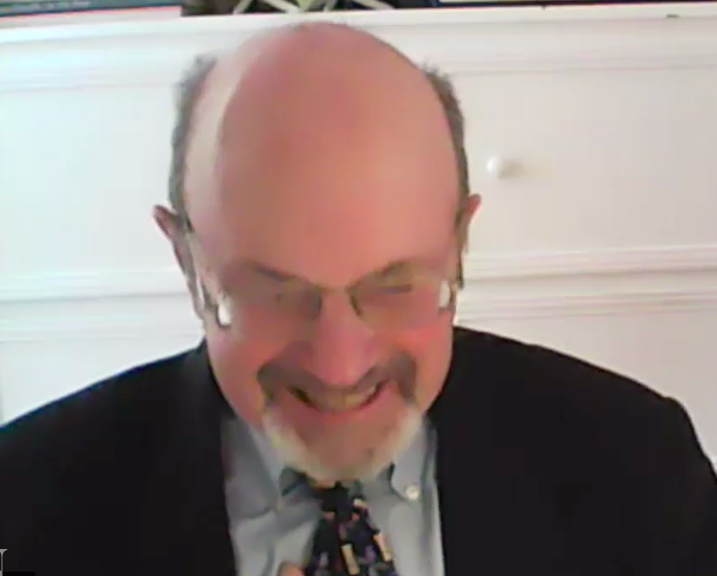
‘Well – at last an American accent. I’ve selected a passage from Sea and Sardinia. I met and attempted to interview Jan Juta – illustrator of the book – in the 1980s, and asked him how he met Lawrence’ He answered “James Joyce introduced him to me in Paris”. I could barely continue with the interview… In this passage, Lawrence and the Queen Bee are on the train to Mandas. It is a description of a landscape, and an anecdote involving a fellow traveller.’
‘But soon we begin to climb to the hills. And soon the cultivation begins to be intermittent. Extraordinary how the heathy, moor-like hills come near the sea: extraordinary how scrubby and uninhabited the great spaces of Sardinia are. It is wild, with heath and arbutus scrub and a sort of myrtle, breast-high. Sometimes one sees a few head of cattle. And then again come the greyish arable-patches, where the corn is grown. It is like Cornwall, like the Land’s End region. Here and there, in the distance, are peasants working on the lonely landscape. Sometimes it is one man alone in the distance, showing so vividly in his black-and-white costume, small and far-off like a solitary magpie, and curiously distinct. All the strange magic of Sardinia is in this sight. Among the low, moor-like hills, away in a hollow of the wide landscape one solitary figure, small but vivid black-and-white, working alone, as if eternally. There are patches and hollows of grey arable land, good for corn. Sardinia was once a great granary.
Usually, however, the peasants of the South have left off the costume. Usually it is the invisible soldiers’ grey-green cloth, the Italian khaki. Wherever you go, wherever you be, you see this khaki, this grey-green war-clothing. How many millions of yards of the thick, excellent, but hateful material the Italian government must have provided I don’t know: but enough to cover Italy with a felt carpet, I should think. It is everywhere. It cases the tiny children in stiff and neutral frocks and coats, it covers their extinguished fathers, and sometimes it even encloses the women in its warmth. It is symbolic of the universal grey mist that has come over men, the extinguishing of all bright individuality, the blotting out of all wild singleness. Oh democracy! Oh khaki democracy!
This is very different from Italian landscape. Italy is almost always dramatic, and perhaps invariably romantic. There is drama in the plains of Lombardy, and romance in the Venetian lagoons, and sheer scenic excitement in nearly all the hilly parts of the peninsula. Perhaps it is the natural floridity of lime-stone formations. But Italian landscape is really eighteenth-century landscape, to be represented in that romantic-classic manner which makes everything rather marvelous and very topical: aqueducts, and ruins upon sugar-loaf mountains, and craggy ravines and Wilhelm Meister water-falls: all up and down.
Sardinia is another thing. Much wider, much more ordinary, not up-and-down at all, but running away into the distance. Unremarkable ridges of moor-like hills running away, perhaps to a bunch of dramatic peaks on the southwest. This gives a sense of space, which is so lacking in Italy. Lovely space about one, and traveling distances—nothing finished, nothing final. It is like liberty itself, after the peaky confinement of Sicily. Room—give me room—give me room for my spirit: and you can have all the toppling crags of romance.
So we ran on through the gold of the afternoon, across a wide, almost Celtic landscape of hills, our little train winding and puffing away very nimbly. Only the heath and scrub, breast-high, man-high, is too big and brigand-like for a Celtic land. The horns of black, wild-looking cattle show sometimes.
After a long pull, we come to a station after a stretch of loneliness. Each time, it looks as if there were nothing beyond—no more habitations. And each time we come to a station.
Most of the people have left the train. And as with men driving in a gig, who get down at every public-house, so the passengers usually alight for an airing at each station. Our old fat friend stands up and tucks his shirt-tail comfortably in his trousers, which trousers all the time make one hold one’s breath, for they seem at each very moment to be just dropping right down: and he clambers out, followed by the long, brown stalk of a wife.
So the train sits comfortably for five or ten minutes, in the way the trains have. At last we hear whistles and horns, and our old fat friend running and clinging like a fat crab to the very end of the train as it sets off. At the same instant a loud shriek and a bunch of shouts from outside. We all jump up. There, down the line, is the long brown stork of a wife. She had just walked back to a house some hundred yards off, for a few words, and has now seen the train moving.
Now behold her with her hands thrown to heaven, and hear the wild shriek “Madonna!” through all the hubbub. But she picks up her two skirt-knees, and with her thin legs in grey stockings starts with a mad rush after the train. In vain. The train inexorably pursues its course. Prancing, she reaches one end of the platform as we leave the other end. Then she realizes it is not going to stop for her. And then, oh horror, her long arms thrown out in wild supplication after the retreating train: then flung aloft to God: then brought down in absolute despair on her head. And this is the last sight we have of her, clutching her poor head in agony and doubling forward. She is left—she is abandoned.
The poor fat husband has been all the time on the little outside platform at the end of the carriage, holding out his hand to her and shouting frenzied scolding to her and frenzied yells for the train to stop. And the train has not stopped. And she is left—left on that God-forsaken station in the waning light.
So, his face all bright, his eyes round and bright as two stars, absolutely transfigured by dismay, chagrin, anger and distress, he comes and sits in his seat, ablaze, stiff, speechless. His face is almost beautiful in its blaze of conflicting emotions. For some time he is as if unconscious in the midst of his feelings. Then anger and resentment crop out of his consternation. He turns with a flash to the long-nosed, insidious, Phœnician-looking guard. Why couldn’t they stop the train for her! And immediately, as if someone had set fire to him, off flares the guard. Heh!—the train can’t stop for every person’s convenience! The train is a train—the time-table is a time-table. What did the old woman want to take her trips down the line for? Heh! She pays the penalty for her own inconsiderateness. Had she paid for the train—heh? And the fat man all the time firing off his unheeding and unheeded answers. One minute—only one minute—if he, the conductor had told the driver! if he, the conductor, had shouted! A poor woman! Not another train! What was she going to do! Her ticket? And no money. A poor woman—
There was a train back to Cagliari that night, said the conductor, at which the fat man nearly burst out of his clothing like a bursting seed-pod. He bounced on his seat. What good was that? What good was a train back to Cagliari, when their home was in Snelli! Making matters worse—
So they bounced and jerked and argued at one another, to their hearts’ content. Then the conductor retired, smiling subtly, in a way they have. Our fat friend looked at us with hot, angry, ashamed, grieved eyes and said it was a shame. Yes, we chimed, it was a shame. Whereupon a self-important miss who said she came from some Collegio at Cagliari advanced and asked a number of impertinent questions in a tone of pert sympathy. After which our fat friend, left alone, covered his clouded face with his hand, turned his back on the world, and gloomed.
It had all been so dramatic that in spite of ourselves we laughed, even while the q-b shed a few tears.’
Thank you to Sue Reid, my wonderful co-editor, to all the contributors, to Jackie, Laura and Howard for speaking at this launch, and to everyone who came.




